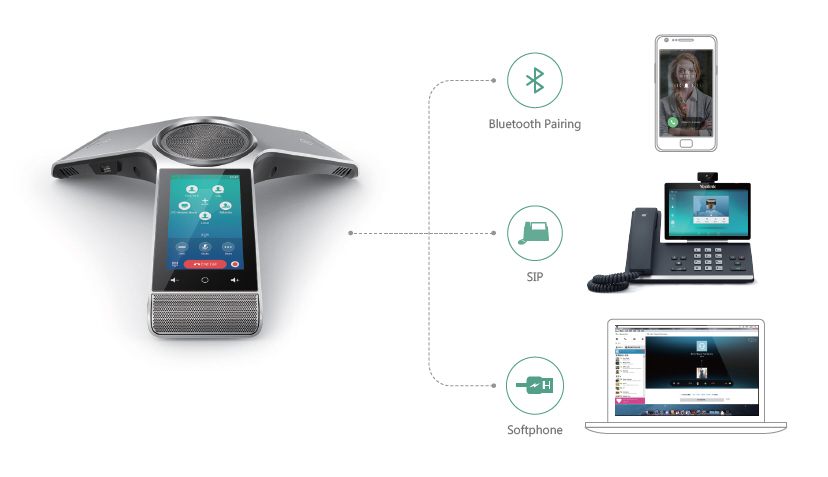Introduction
In today's fast-paced world, adaptability is key, particularly in the realm of communication. Businesses need to stay connected, not just within their teams but also with clients and partners around the globe. Enter VoIP Phone Systems—the modern solution that has revolutionized how we communicate. With the ability to make calls over the internet rather than traditional phone lines, VoIP offers enhanced flexibility, cost-efficiency, and a host of advanced features that cater to the dynamic needs of contemporary businesses.
The significance of VoIP Phone Systems cannot be overstated. They provide an array of functionalities—from video conferencing to call forwarding—allowing organizations to operate seamlessly regardless of geographical constraints. This comprehensive guide will explore how you can enhance communication flexibility through top VoIP systems while delving into https://soundcurve.com/voip-phone-services/ their various features, benefits, and practical applications.
What are VoIP Phone Systems?
Understanding VoIP Technology
Voice over Internet Protocol (VoIP) refers to the technology that allows voice communications to be transmitted over the internet. Unlike traditional telephony systems that rely on circuit-switched networks, VoIP converts voice signals into digital data packets for transmission.
How Do VoIP Phone Systems Work?
VoIP systems utilize several key components:

- Microphone/Headset: Converts sound into electrical signals. Analog Telephone Adapter (ATA): Bridges your traditional phone with the digital network. Router: Ensures proper data packet routing for efficient communication. VoIP Software: Facilitates calling via mobile devices or computers.
The Evolution of Communication Platforms
From rotary phones to sophisticated mobile apps, communication technology has undergone significant transformations. The advent of VoIP represents one of the most impactful shifts by enabling near-instantaneous global communication at minimal costs.
Enhancing Flexibility in Communication with Top VoIP Phone Systems
The Need for Flexible Communication Solutions
In an era where remote work is becoming more commonplace, traditional phone systems struggle to keep up with demands for flexibility. Employees need access to reliable communication tools that facilitate collaboration from anywhere on earth.
Key Features of Top VoIP Phone Systems
Call Routing and Forwarding- Streamlines call handling across multiple devices.
- Enhances face-to-face interactions without geographical limits.
- Enables employees to take calls on-the-go.
- Combines voice calls with text and file sharing.
- Ensures important messages aren't missed.
- Easily add or remove lines as business needs change.
Why Choose VoIP Over Traditional Systems?
The choice between traditional telephony and VoIP boils down to flexibility and cost-effectiveness:
- Lower operational costs Enhanced mobility Advanced features tailored for modern business practices
Comparative Analysis: Top VoIP Providers
| Feature | Provider A | Provider B | Provider C | |----------------------------|------------|------------|------------| | Pricing (per user/month) | $20 | $25 | $30 | | Video Conferencing | Yes | No | Yes | | Mobile App | Yes | Yes | No | | Customer Support | 24/7 | 9 AM-5 PM | 24/7 |
Overview of Popular VoIP Providers
Provider A: A Comprehensive Solution
Provider A excels in offering a complete package that includes unlimited domestic calls, video conferencing capabilities, and robust customer support.

Provider B: Tailored for Small Businesses
This provider focuses on affordability while providing essential features suitable for startups or small teams looking for budget-friendly options without sacrificing quality.
Provider C: Enterprise-Level Functionality
With a focus on larger organizations, Provider C provides extensive administrative controls and integrations with other enterprise software solutions.
Advantages of Using VoIP Phone Systems
Cost Savings
Businesses can expect substantial savings when switching from traditional landlines to VoIP services due to reduced call rates and elimination of hardware costs.
Enhanced Collaboration Tools
With integrated messaging and conferencing capabilities, teams can collaborate more effectively, bridging gaps created by remote working environments.
Increased Mobility
Employees can connect from any location using smartphones or laptops equipped with internet access—no need for physical office space constraints!
Implementing a Successful Transition
Steps for Transitioning to a VoIP System
Evaluate Current Needs Research Potential Providers Conduct a Cost-Benefit Analysis Plan Implementation Strategy Train Employees on New FeaturesCommon Challenges During Transition
- Resistance from employees accustomed to traditional systems. Potential technical issues during initial setup.
Solutions to Overcoming Challenges
Be proactive about training sessions aimed at easing transition anxieties while ensuring robust technical support is in place throughout deployment phases.
Security Considerations for VoIP Use
Understanding Security Risks in VoIP Networks
As with any internet-based technology, security remains paramount:
- Eavesdropping risks Denial-of-Service attacks Caller ID spoofing
Best Practices for Securing Your VoIP System
Utilize strong passwords Regularly update software Implement firewalls specifically designed for VoIP traffic Employ encryption methods where feasibleFuture Trends in Communication Technologies
Artificial Intelligence Integration
AI-powered tools are becoming increasingly prevalent within communication technologies:
- Automated scheduling assistants Intelligent call routing based on caller profiles
Predictive Analytics Use Cases
Companies are leveraging predictive analytics through their cloud-based phone systems providing insights into call patterns leading up customer service improvements.
Frequently Asked Questions (FAQs)
1. What is a VoIP phone system?
A Voice over Internet Protocol (VoIP) phone system enables users to make voice calls using broadband internet connections instead of traditional phone lines.
2. How does using a VoIP system save money?
By relying on internet connections rather than costly telephone infrastructure, businesses often experience reduced monthly fees along with lower long-distance calling charges.
3. Can I use my existing phones with a new VoIP system?
Yes! Most reputable providers offer adapters allowing typical analog phones or existing PBX systems integration without extensive replacement costs involved!
4. Is the call quality good with Voice over IP?
Absolutely! As long as there's sufficient bandwidth available on your network connection; many users report crystal-clear audio quality comparable—or superior—to standard landline services!
5. Are there any hidden costs associated with implementing a new system?
While most providers advertise clear pricing structures upfront; it's crucial always check if additional expenses exist such as installation fees or customer support plans beyond basic offerings!
6. How scalable are these systems as my business grows?
One major advantage lies within scalability—adding/removing lines or features typically occurs quickly via online dashboards provided by vendors minimizing disruption during transitions!
Conclusion
In conclusion, enhancing flexibility in communication is no longer merely advantageous—it’s essential for modern businesses navigating today’s complex landscape filled with remote workforces and global partnerships alike! By investing thoughtfully into top-tier VoIP Phone Systems, organizations can unlock unparalleled opportunities—facilitating smoother collaborations while enjoying significant cost savings along the way! Embrace this transformative technology today; your future self will thank you!